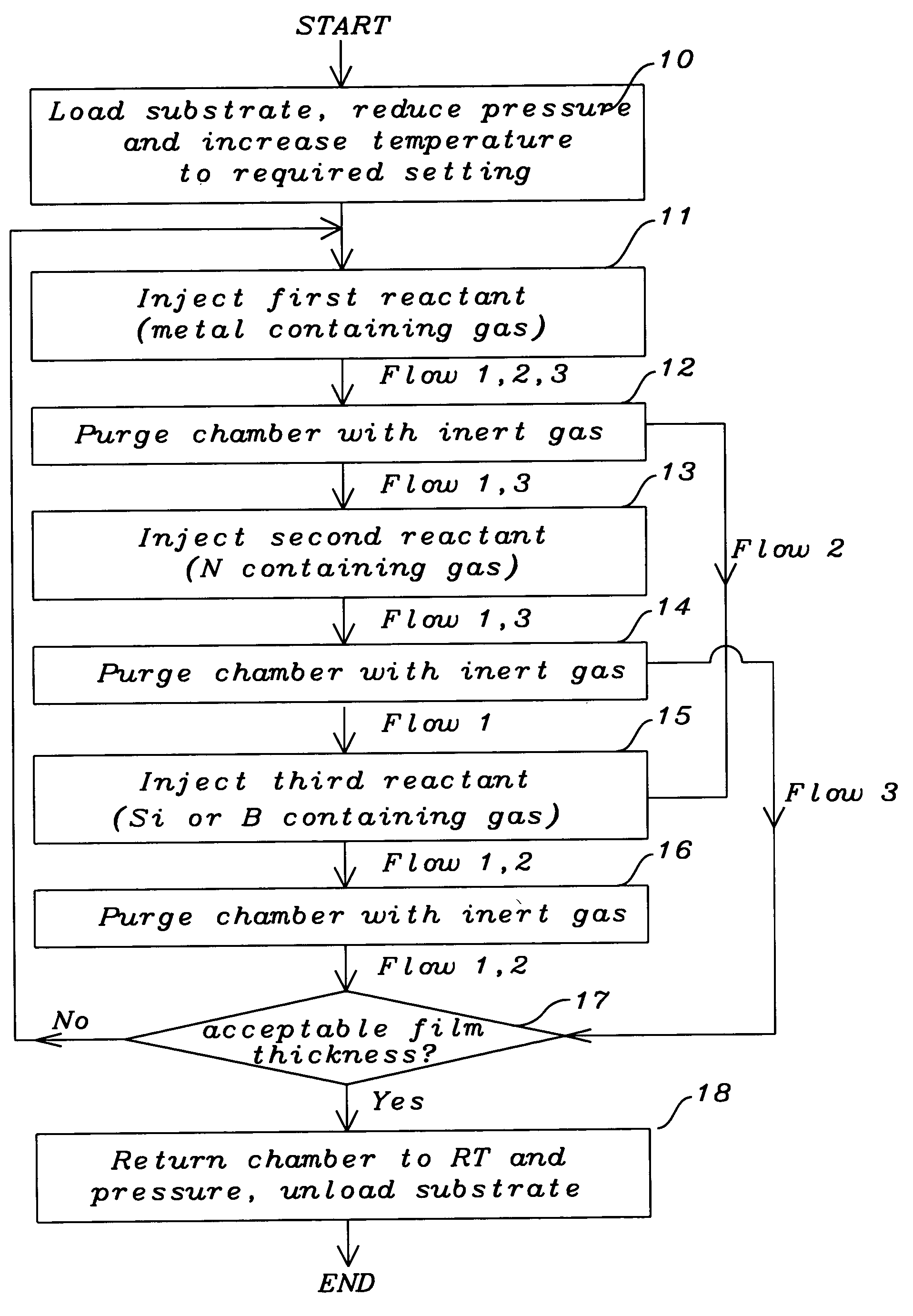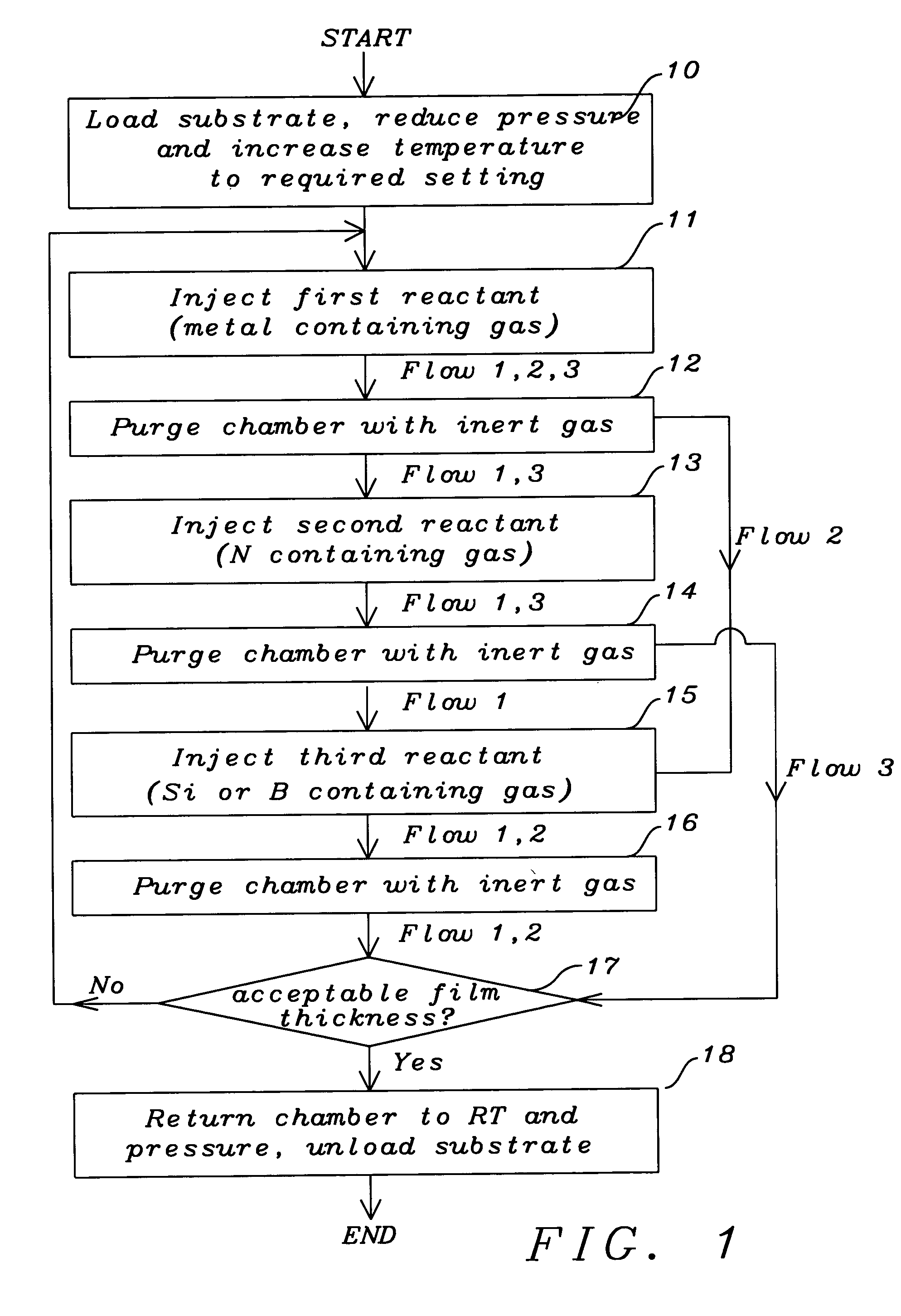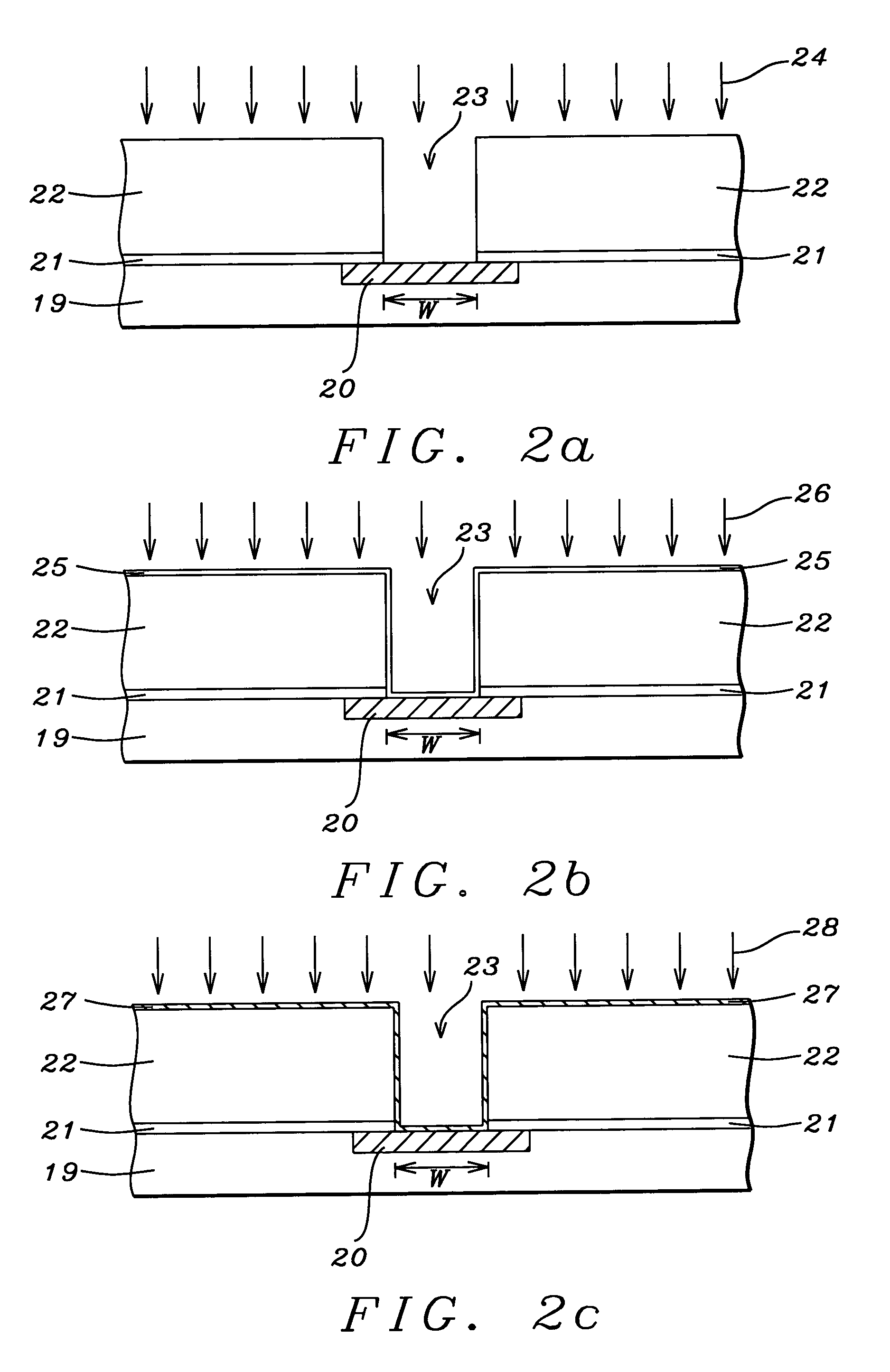Method of multi-element compound deposition by atomic layer deposition for IC barrier layer applications
a technology of ic barrier layer and compound, which is applied in the direction of single crystal growth, polycrystalline material growth, chemistry apparatus and processes, etc., can solve the problems of reducing device performance, poor coverage of certain parts of the via opening, and difficult conventional chemical vapor deposition method of forming a uniform diffusion barrier layer, etc., to achieve good cu barrier capability, improve the performance of the mosfet transistor, and uniform step coverage
- Summary
- Abstract
- Description
- Claims
- Application Information
AI Technical Summary
Benefits of technology
Problems solved by technology
Method used
Image
Examples
first embodiment
[0037] In a first embodiment, a composite layer comprised of three elements is applied with an ALD method and is especially useful as a diffusion barrier layer for Cu in an interconnect structure. However, the ALD deposited layer is not limited to barrier layer applications or to interconnect structures and may be used wherever a composite layer containing three elements is employed in a semiconductor device. The composite layer has the formula M1VSXNZ where M1 is a metal, S is Si or B, and N is nitrogen and where V, X, and Z are fractions between 0 and 1 that together equal 1.
[0038] Referring to FIG. 1, a flow diagram shows a representative method for an ALD sequence comprised of a plurality of cycles that each form a monolayer and collectively form a composite layer. A substrate is provided and is loaded into a process chamber in an ALD tool in step 10. Typically, the substrate is secured to a chuck or pedestal in the process chamber. The ALD process tool may be an Endura system ...
second embodiment
[0056] In a second embodiment, a composite metal oxide layer comprised of three elements is applied with an ALD method and serves as a high k dielectric layer in a MOSFET device that may be a n-type (NMOS) or p-type (PMOS) transistor. The composite layer has the formula. M1PM2QOR where M1 is a first metal, M2 is a second metal, O is oxygen and where P, Q, and R are fractions between 0 and 1 that when added together equal 1.
[0057] Referring to FIG. 3, a flow diagram shows a representative method for an ALD sequence that provides a composite metal oxide layer. A substrate is provided and is loaded into a process chamber in an ALD tool in step 30. Typically, the substrate is secured to a chuck or pedestal in the process chamber which is part of an ALD tool described in the first embodiment. Step 30 also involves heating the chamber so that the substrate reaches a temperature in the range of 100° C. to 500° C. which is maintained until the ALD process is completed. Additionally, all ga...
third embodiment
[0069] In a third embodiment, a composite layer comprised of four elements is formed by an ALD method. In one aspect, the composite layer serves as a diffusion barrier layer in a Cu interconnect scheme. However, the ALD deposited layer is not limited to barrier layer applications or to interconnect structures and may be employed in any semiconductor device where a composite layer containing four elements is useful. The composite layer has the formula M1vM2WSXNZ where M1 is a first metal, M2 is a second metal, S is Si or B, and N is nitrogen and where V, W, X, and Z are fractions between 0 and 1 and which added together equal 1.
[0070] Referring to FIG. 5, a flow diagram shows a method including a cycle F and a cycle G that may be performed in various orders in an ALD sequence to deposit a composite layer comprised of four elements. A substrate is loaded into a process chamber in an ALD tool in step 50 and the chamber is prepared for processing as described in step 30.
[0071] Beginni...
PUM
 Login to View More
Login to View More Abstract
Description
Claims
Application Information
 Login to View More
Login to View More - R&D
- Intellectual Property
- Life Sciences
- Materials
- Tech Scout
- Unparalleled Data Quality
- Higher Quality Content
- 60% Fewer Hallucinations
Browse by: Latest US Patents, China's latest patents, Technical Efficacy Thesaurus, Application Domain, Technology Topic, Popular Technical Reports.
© 2025 PatSnap. All rights reserved.Legal|Privacy policy|Modern Slavery Act Transparency Statement|Sitemap|About US| Contact US: help@patsnap.com



